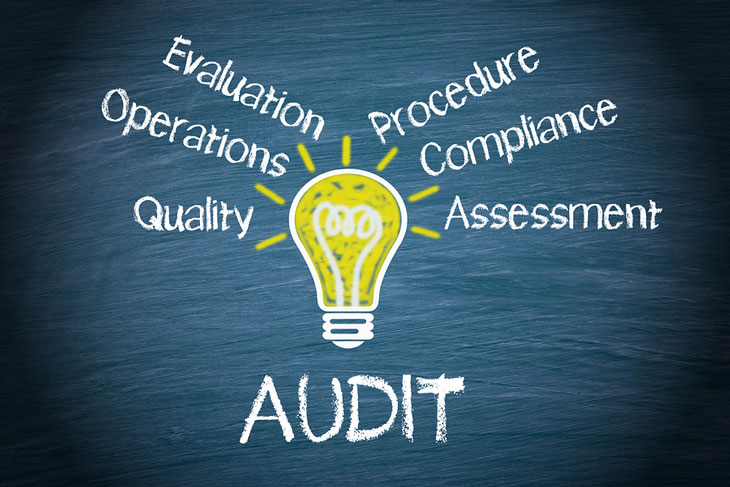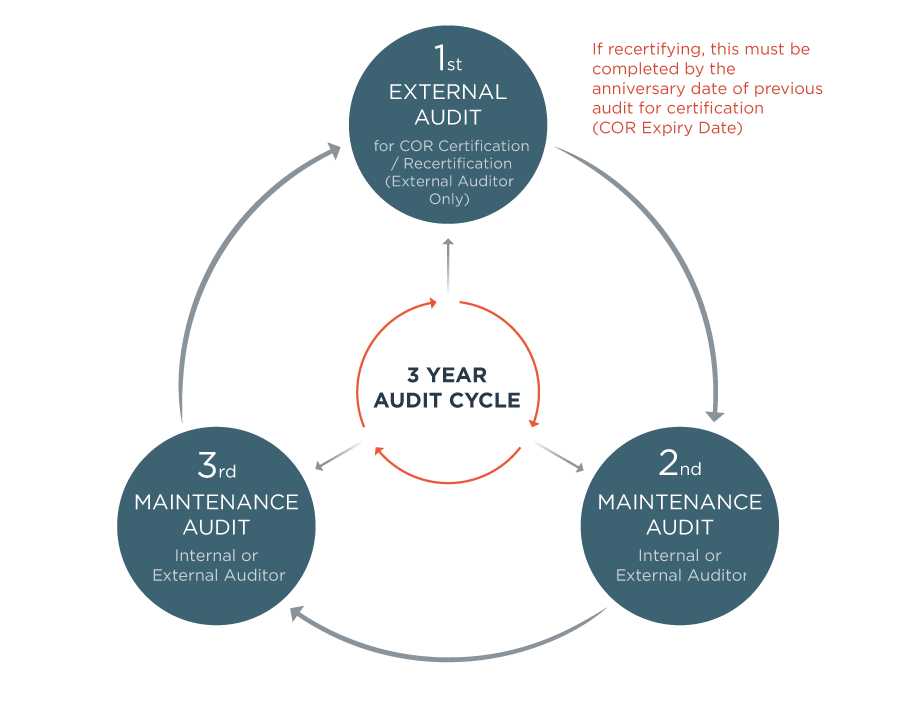
We at Shark Certification are having a separate team of approved Auditors for various purposes. Auditing is the on-site verification activity, such as inspection or examination, of a process or quality system, to ensure compliance to requirements. An audit can apply to an entire organization or might be specific to a function, process, or production step.
There are three discrete types of audits: product (which includes services), process, and system. However, other methods, such as a desk or document review audit, may be employed independently or in support of the three general types of audits.
Some audits are named according to their purpose or scope. The scope of a department or function audit is a particular department or function. The purpose of a management audit relates to management interests such as assessment of area performance or efficiency.
An audit may also be classified as internal or external, depending on the interrelationships among participants. Internal audits are performed by employees of your organization. External audits are performed by an outside agent. Internal audits are often referred to as first-party audits, while external audits can be either second-party, or third-party.
Types of audits we do
Product audit
An examination of a particular product or service (hardware, processed material, software) to evaluate whether it conforms to requirements (that is, specifications, performance standards, and customer requirements).

Process audit
A verification that processes are working within established limits. It evaluates an operation or method against predetermined instructions or standards to measure conformance to these standards and the effectiveness of the instructions. Such an audit may:
- Check conformance to defined requirements such as time, accuracy, temperature, pressure, composition, responsiveness, amperage, and component mixture.
- Examine the resources (equipment, materials, people) applied to transform the inputs into outputs, the environment, the methods (procedures, instructions) followed, and the measures collected to determine process performance.
- Check the adequacy and effectiveness of the process controls established by procedures, work instructions, flowcharts, and training and process specifications.
System audit
An audit conducted on a management system. It can be described as a documented activity performed to verify, by examination and evaluation of objective evidence, that applicable elements of the system are appropriate and effective and have been developed, documented, and implemented in accordance and in conjunction with specified requirements.
- A quality management system auditevaluates an existing quality program to determine its conformance to company policies, contract commitments, and regulatory requirements.
- Similarly, an environmental system auditexamines an environmental management system, a food safety system audit examines a food safety management system, and safety system audits examine the safety management system.
Internal & external audits: first-, second-, and third-party audits
- A first-party audit is performed within an organization to measure its strengths and weaknesses against its own procedures or methods and/or against external standards adopted by (voluntary) or imposed on (mandatory) the organization. A first-party audit is an internal audit conducted by auditors who are employed by the organization being audited but who have no vested interest in the audit results of the area being audited.
- A second-party audit is an external audit performed on a supplier by a customer or by a contracted organization on behalf of a customer. A contract is in place, and the goods or services are being, or will be, delivered. Second-party audits are subject to the rules of contract law, as they are providing contractual direction from the customer to the supplier. Second-party audits tend to be more formal than first-party audits because audit results could influence the customer’s purchasing decisions.
- A third-party audit is performed by an audit organization independent of the customer-supplier relationship and is free of any conflict of interest. Independence of the audit organization is a key component of a third-party audit. Third-party audits may result in certification, registration, recognition, an award, license approval, a citation, a fine, or a penalty issued by the third-party organization or an interested party.

Other Auditing Services
Audit preparation
Audit preparation consists of everything that is done in advance by interested parties, such as the auditor, the lead auditor, the client, and the audit program manager, to ensure that the audit complies with the client’s objective. The preparation stage of an audit begins with the decision to conduct the audit. Preparation ends when the audit itself begins.
Audit performance
The performance phase of an audit is often called the fieldwork. It is the data-gathering portion of the audit and covers the time period from arrival at the audit location up to the exit meeting. It consists of activities including on-site audit management, meeting with the auditee, understanding the process and system controls and verifying that these controls work, communicating among team members, and communicating with the auditee.
Audit reporting
The purpose of the audit report is to communicate the results of the investigation. The report should provide correct and clear data that will be effective as a management aid in addressing important organizational issues. The audit process may end when the report is issued by the lead auditor or after follow-up actions are completed.
Audit follow-up and closure
“The audit is completed when all the planned audit activities have been carried out, or otherwise agreed with the audit client. Verification of follow-up actions may be part of a subsequent audit.
